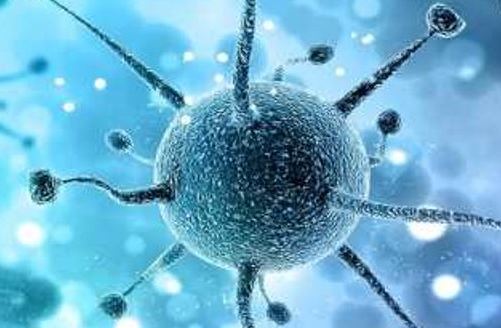Microbiology as a field in the biological sciences saw the light of the day because of several innovative research and experiments by pioneers in this field. The study of microbiology will be incomplete without a touch on the founding fathers of this important field of biological sciences. Several scientists in time past contributed tremendously to the development of microbiology; and the notable works of these famous microbiologists in time past have continued to impact and give impetus to the modern day microbiology that we now have at our hands. Though research all over the world is now going molecular, it will be a disservice not to mention and elaborate on the serendipitous works of these legendary microbiologists whose works have helped the field of microbiology to blossom to what it is today.
Microorganisms are ancient forms of life that are by and large too small to be seen with the naked eye, and the field of Microbiology is exclusively dedicated to the studying and harnessing of these small forms of life which have immense impact on practically every spheres of life including plants, animals, humans and even the inanimate aspect of the earth. Microbiology, an applied and basic biological science demonstrates in every respect the fundamental principles that align the biological discipline, thus making it the foundation and a center-piece of the biological sciences.
The study of microbiology actually began and gained prominence with the discovery of the microscope, a metallic piece of instrument which is used to see microorganisms (invisible forms of life). Robert Hooke (1843-1910) was actually the first to use the microscope to view the unseen forms of life, making him the first to describe microorganisms. Hooke reported seeing plant and fungal structures under his crude compound microscope whose lenses were unable to view bacteria. His observations were drawn and recorded in his book titled Micrographia. However, Antony Van Leeuwenhoek (1632-1723) – who is widely regarded as the father of the field of microbiology, was actually the first microbiologist to see and describe bacteria. Therefore, the development of microbiology as a biological science depended on the availability of the microscopes in addition to the ability to isolate and grow pure forms of microorganisms in vitro and in vivo.
There is plethora of microscopes today ranging from simple light microscopes to even complex electron microscopes that give better perspectives about the microbial world. These pieces of equipment allow microbiologists to gain better understanding of microbial cells at the cellular level. Several microbiologists including but not limited to John Needham (contributed to the theory of spontaneous generation), Nicolas Appert (father of canning and discoverer of appertization), Francesco Redi (contributed to the theory of spontaneous generation), Edward Jenner (discovered vaccination), Alexander Flemming (discovered the first antibiotic, penicillin), Elie Metchnikoff (coined the word phagocytosis), Louis Pasteur (discovered pasteurization), Dmitri Iwanovski (contributed to the field of virology), John Tyndall (discovered tyndallization), Paul Ehrlich (discovered antimicrobial agents), Hans Christian Joachim Gram (discovered Gram Staining technique), Joseph Lister (contributed to the principles of antisepsis during surgery) and Robert Koch (formulated Koch’s postulate of disease) amongst others contributed tremendously to the development of the field of microbiology.
The advances in the field of microbiology today is centered on the serendipitous discovery of many pioneer microbiologists who in time past made numerous contributions that scientists after them built upon as aforesaid. Each discovery and invention in the field of microbiology by notable microbiologists has helped to broaden our understanding of the microbial life as well as the economic and medical importance of microorganisms to man and his environment. Our understanding of the microbial world is a continuum in view of the fact that as new species and strains of microorganisms are being discovered some old diseases are now re-emerging; new drugs and vaccines are being discovered; and microbiologists are now more proactive in tackling the untoward effects of microorganisms especially as it has to do with causing diseases. The beneficial potentials of microorganisms are also harnessed by man to solving some societal problems. Thus it is critical to acquaint ourselves about some notable discoveries in the field of microbiology, the inventors or discoverers and the solid foundation they have laid in making this important aspect of the biological and medical sciences, microbiology to see the light of the day.
References
Barrett J.T (1998). Microbiology and Immunology Concepts. Philadelphia, PA: Lippincott-Raven Publishers. USA.
Beck R.W (2000). A chronology of microbiology in historical context. Washington, D.C.: ASM Press.
Brooks G.F., Butel J.S and Morse S.A (2004). Medical Microbiology, 23rd edition. McGraw Hill Publishers. USA. Pp. 248-260.
Chung K.T, Stevens Jr., S.E and Ferris D.H (1995). A chronology of events and pioneers of microbiology. SIM News, 45(1):3–13.
Drews G (1999). Ferdinand Cohn, among the Founder of Microbiology. ASM News 65(8):547.
Gest H (2005). The remarkable vision of Robert Hooke (1635-1703): first observer of the microbial world”. Perspect. Biol. Med, 48(2):266–272.
Nester E.W, Anderson D.G, Roberts C.E and Nester M.T (2009). Microbiology: A Human Perspective. Sixth edition. McGraw-Hill Companies, Inc, New York, USA.
Salyers A.A and Whitt D.D (2001). Microbiology: diversity, disease, and the environment. Fitzgerald Science Press Inc. Maryland, USA.
Slonczewski J.L, Foster J.W and Gillen K.M (2011). Microbiology: An Evolving Science. Second edition. W.W. Norton and Company, Inc, New York, USA.
Summers W.C (2000). History of microbiology. In Encyclopedia of microbiology, vol. 2, J. Lederberg, editor, 677–97. San Diego: Academic Press.
Talaro, Kathleen P (2005). Foundations in Microbiology. 5th edition. McGraw-Hill Companies Inc., New York, USA.
Wainwright M (2003). An Alternative View of the Early History of Microbiology. Advances in applied microbiology. Advances in Applied Microbiology, 52:333–355.
Willey J.M, Sherwood L.M and Woolverton C.J (2008). Harley and Klein’s Microbiology. 7th ed. McGraw-Hill Higher Education, USA.
Discover more from #1 Microbiology Resource Hub
Subscribe to get the latest posts to your email.



